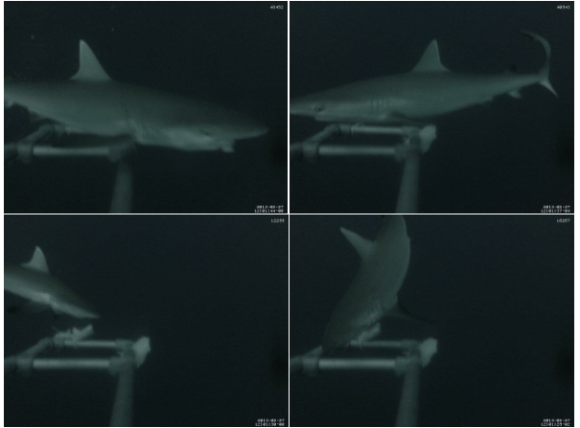
This camera rig uses a Raspberry Pi to send a camera down fifty meters (mirror on RPi blog) in order to spy on sharks. We got really excited at first thinking that it might be using the camera module from the Raspberry Pi Foundation but that isn’t the case. Do keep reading though, there’s a lot of cool stuff involved in this one.
The project used a collection of camera units spread over a large area to monitor shark activity. Each is mounted on an anchored buoy, using solar panels and a lead acid gel battery for power. The RPi itself remains topside in a waterproof box. It connects to the camera using a 50-foot Ethernet patch cable.
We figure the challenge of building the hardware parallels that of designing an underwater ROV. The camera needs an enclosure that can stand up to the pressure at that depth while allowing the cable to pass through it. There is also an interesting note in the project log about getting the camera exposure settings to behave.















50 ft != 50 m
I was gonna say that doesn’t quite sound right lol
“Shark still looks fake.” (I blame the picture in the post above this one for making me think of that.)
The cable must be 50 meters in your description I think.
Two points,drilling stainless must be done firmly and quickly and continuously in one go because if you are sheepish the stainless work hardens with results as stated. Second they mssed the best seal which is a square O ring on the end of the polycarbonate tube and cut into a groove in the ends.
Great that you changed the format back . I did not like that change. Thanks
I’m not sure what you mean by square o-rings. O-rings have a round cross section. Round o-rings are easy to install, can run to very high pressures and are widely available. I’ve used them up to 600 Bar (~6000 m depth), and they work really well. If you mean it would have been better to have a face seal on the end of the tube, well, yeah, for sure, the pressure helps form the seal then. The reason we didn’t is that the wall thickness of the tube is sort of against us here, and we’d have trouble getting the surface finish right.
I’d love to build a bunch more enclosures like this with different internal structures, because when we went over 10 bar with this one the failure mode was collapse of the laser-cut acrylic on the inside of the tube. If we used aluminum we could probably go WAY deeper!
Thanks for your interest folks, this was an awesome project and we’re already working on round 2!
When did you send something to 6km underwater? What was it? That sounds fishy to me. Fishy…but awesome.
http://www.guralp.com/product-range/ocean-bottom-systems/
For work (but still hacks sometimes! awesome kit tho, lots of titanium)
Always wondered why submersible electronic enclosures are not filled with a non-conductive liquid which eliminates the impact of external water pressure (as it is non-compressible)
‘The RPi itself remains topside in a waterproof box.’
From what I understand theres 2 RPIs involved. One topside, one down below.